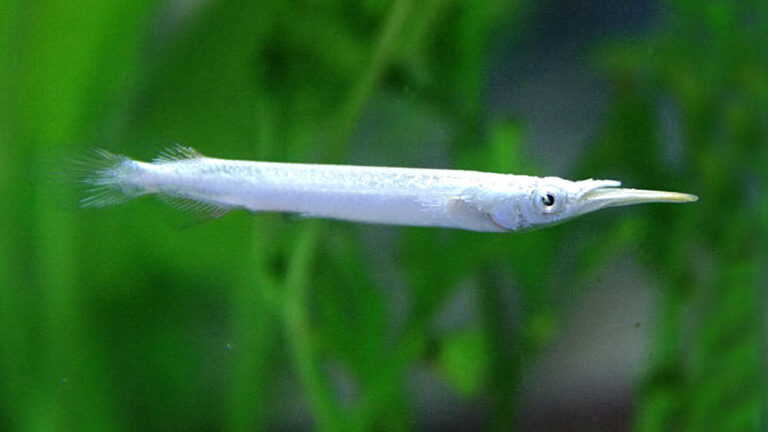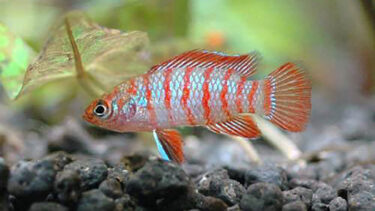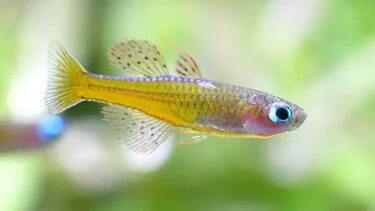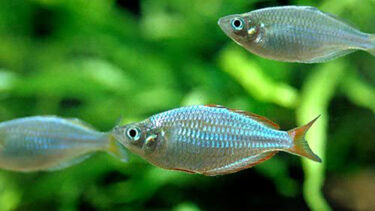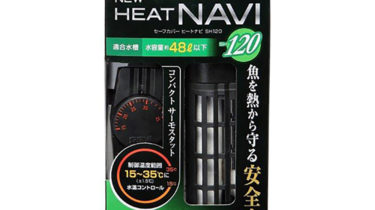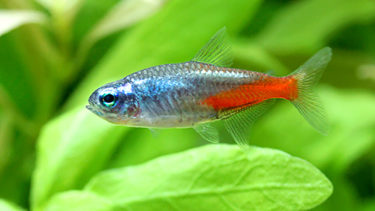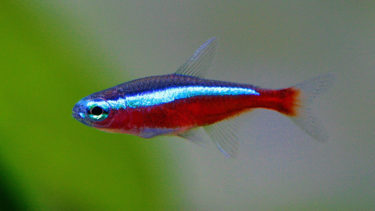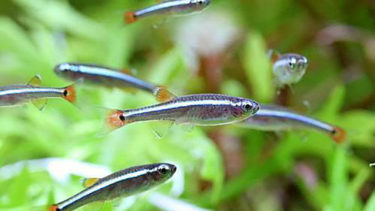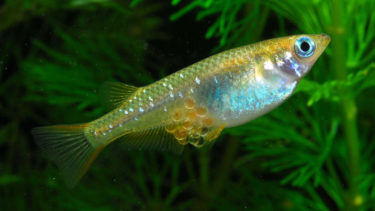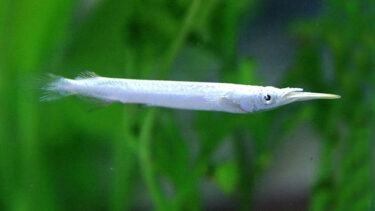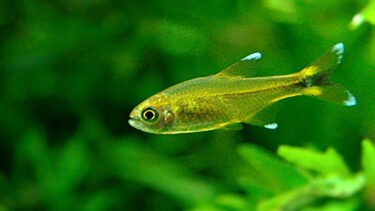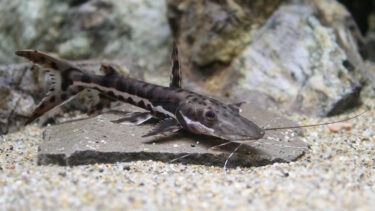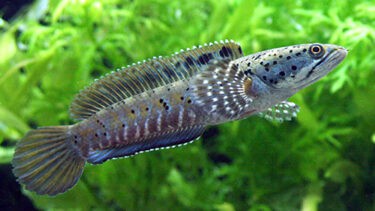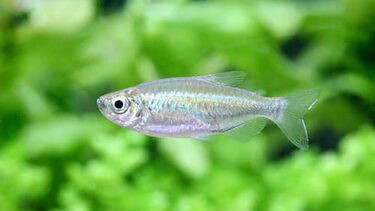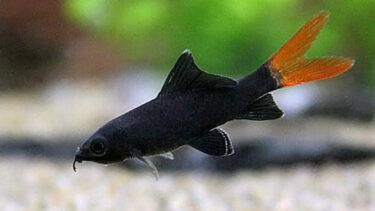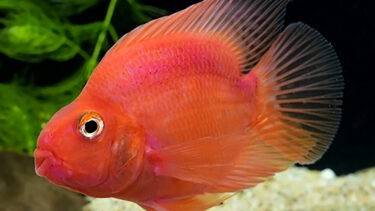The dermogeny is a tropical fish of the family Dermatophytidae (Dermatophytes) and genus Dermogeny, originating from Thailand and Malaysia in Southeast Asia, and is characterized by its silver metallic color and sparkling light. In this article, I would like to explain in detail the characteristics of the Delmogeny and how to keep it.
What is Dermogeny?

The dermogeny is a tropical fish in the family Dermogenidae of the order Datura. The Delmogeny originates from Thailand and Malaysia in Southeast Asia. The body color of the dermogeny is a silver metallic color with a glossy sheen. This luster is caused by the presence of luminous bacteria living on the surface of the body. The most distinctive feature of the dermogeny is its long, slender body and long, slender mouth, like that of the saltwater fish Sayori (daylily).This distinctive appearance makes it a very popular species. The dermogeny is also well known as a fish that often jumps out of aquariums, so we recommend using glass lids or other measures to prevent it from flying out when keeping it.
When you go to a specialty store to look at tropical fish, you may be surprised at the large number of species available. The prices are different, as are the sizes and appearances, so it is difficult to know what to choose based on. In this article, I would like to explain in detail about the different types of tropical fish. Classification of tropical fish Ca[...]
The Avena puffer is a tropical fish of the Carinotetraodon genus in the pufferfish family, Pufferfish, native to the Bumpa River in India. In this article, we will discuss the characteristics of the Avena puffer and how to keep [...].
The Scarlet Gem is a tropical fish from India and Southeast Asia, belonging to the genus Dario of the family Badiidae, the order of sea bass, and has a beautiful scarlet body color that includes red and yellow tones. In this article, I would like to explain in detail the characteristics of the Scarlet Gem and how to keep it [...].
The butterfly rainbow is a tropical fish native to northern Australia and southern New Guinea, belonging to the family Pseudomugilidae of the order Pseudomugilidae, and has a transparent body with yellowish coloration and elongated fins. In this article, we will discuss the flapjacks [...].
The Neon dwarf rainbow is a tropical fish in the Melanotaenia family of the order Melanotaeniidae, which is native to the Mamberamo River that flows through the northern part of New Guinea Island, Indonesia. This time, the [...].
How to keep Dermogeny
Dermogeny will be an easy breed to keep. The lifespan of a dermogeny is approximately 1-2 years. Its body size is approximately 5 to 7 cm. However, both lifespan and body size vary depending on the environment in which they are kept and the food they are fed. They prefer slightly alkaline to neutral water quality, with a pH range of 6.5 to 8.0. Dermogenys are classified as a tropical fish, so if you keep them in Japan, you will need a heater in winter.
A heater is a device that maintains a constant water temperature. If you go to a specialty store that carries heaters, you will find a wide variety of types. Some people may be at a loss as to which one to choose. In this article, we would like to explain about such heaters [...]
Points to keep in mind when mixing swimmers
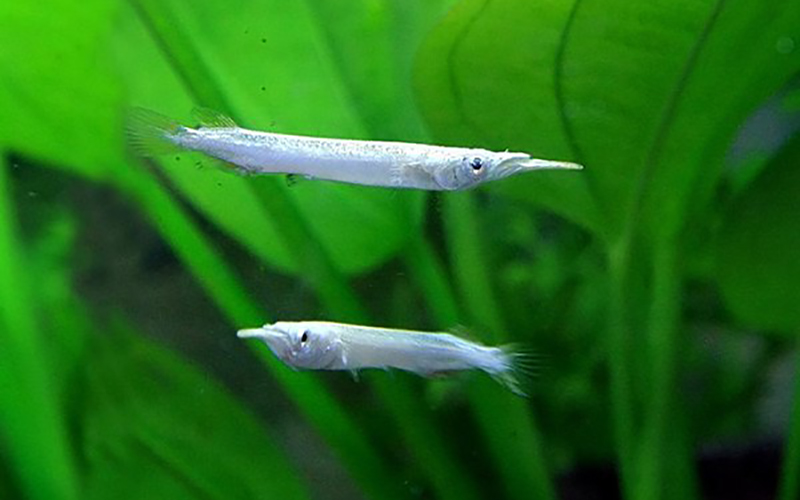
Regarding mixed swimming, Delmogeny have a mild temperament. Therefore, if the breed you put them in with is territorial or aggressive, the Delmogeny may be beaten up, and they may get injured or become sick due to stress.Basically, dermogenys are mild-mannered, but territorial disputes between dermogenys may occur on rare occasions, so please take measures to prevent this by adding more water plants to create a hiding place. Recommended species for mixing with the dermogeny are small fish such as neon tetras and other calasines and red fins. However, since Delmogenys are slow swimmers, depending on the species you choose to mix with them, they may not be able to eat food properly, so make sure they are eating properly when you feed them.
The neon tetra is a tropical fish in the family Carassinae, and is a beautiful fish with a blue glow from its head to its tail fin. In this article, I would like to explain in detail the characteristics of the Neon Tetra and how to keep it. What is a Neon Tetra?
The cardinal tetra is a tropical fish of the family Carassinae of the order Carassinae that lives in the Negro and Amazon rivers in South America. It is a beautiful fish with a blue glow from its head to its tail fin. In this article, I would like to explain in detail the characteristics of the Cardinal Tetra and how to keep it. [...].
The redfin is a tropical fish of the carp family Tanichthys, which is native to Baiyunshan in Guangzhou, China. Its body color is mainly silver-gray with a dark blue line from the back of the eye to the base of the tail fin. In this article, we will explain in detail the characteristics of the redfin and how to keep it [...].
Points about spawning
Many people who keep dermogenys want to breed them. To distinguish between male and female dermogenys, compare their tail fins. Males have a stepped tail and are relatively small in size. Females, on the other hand, have rectangular-shaped rumps and larger rumps than males.The male's rump is smaller because it has a reproductive organ called a gonopodium. Dermogenys reproduce in an ovoviviparous state, the same as guppies and other species. In general, tropical fish lay eggs in water plants and hatch from the eggs, but the Dermogeny is an ovoviviparous species, meaning that the eggs hatch in the female's body and the fry are born as fry. Therefore, the eggs are not eaten by other tropical fish, and breeding is relatively easy in many cases. As breeding nears, the female's abdomen grows larger, so it is recommended that you isolate her in a separate tank or other location for breeding. If the fry have spawned and are born without you noticing, move only the fry to a separate tank or other aquarium for breeding.
Many people who keep killifish want them to spawn. However, not many people know about spawning and what they need to do to prepare for it. This time, we would like to explain the method of spawning and the points to be noted [...].
If you have kept goldfish for a long time, you may want to try to breed them. However, if goldfish spawning is not done with care, there is a high possibility that the goldfish will weaken. In this article, I would like to explain in detail the method and precautions for spawning. The time of spawningThe time of spawning of goldfish is [...]
What to keep in mind when keeping Dermogeny.
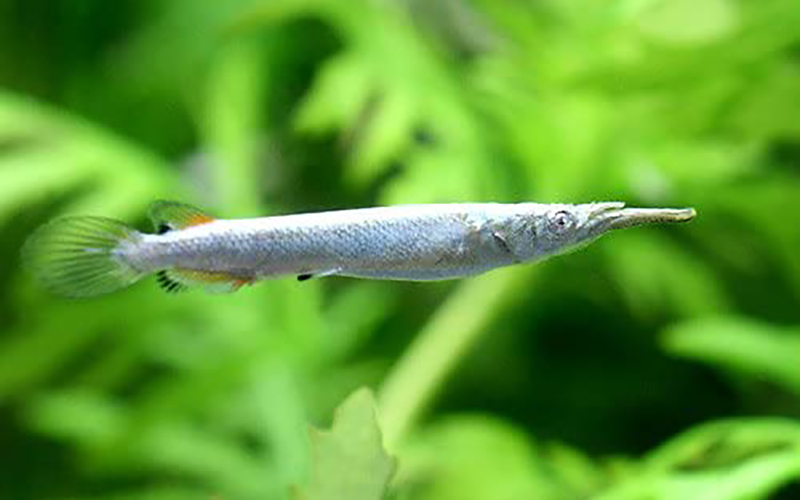
The Delmogeny is a recommended species because it is easy to keep and easy to mix with other species. The Delmogeny is a popular species because of its silver metallic coloration and shiny body color, as well as its distinctive appearance with its long, slender body and long, slender mouth. The most important point to keep in mind when breeding the Dermogeny is that it jumps.It is common for them to fly out the moment the glass lid is removed to feed them. Therefore, please make sure that you have a lid or netting in place to prevent them from jumping out. If you are interested in Dermogeny, we recommend that you take a look at it at a specialty store.

